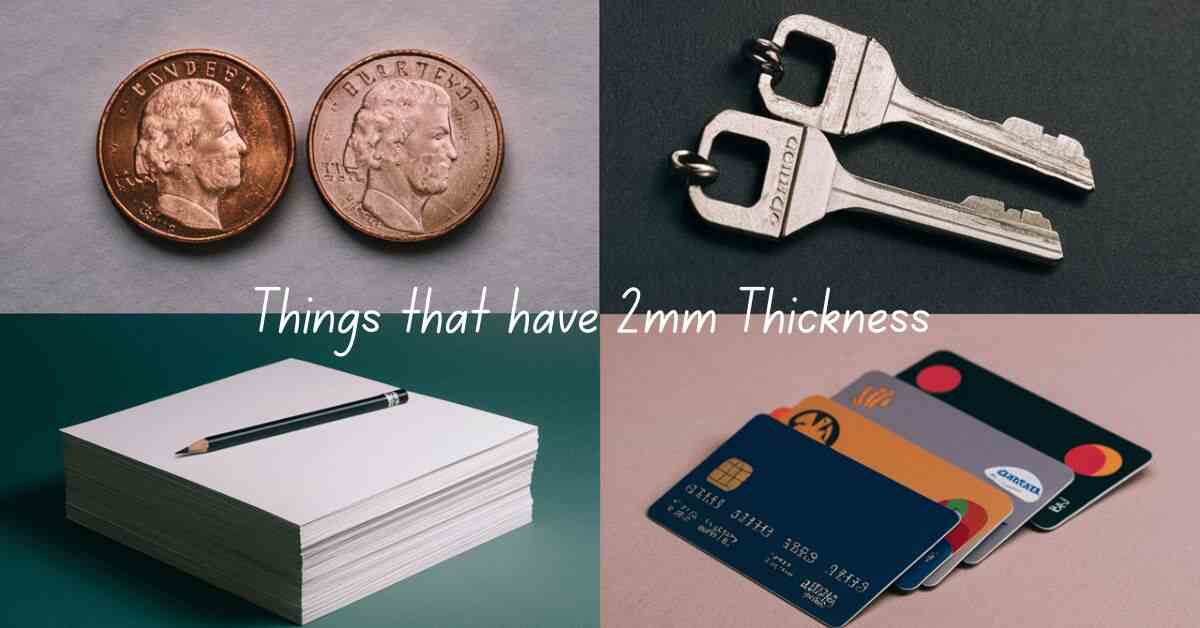When it comes to materials like metal or plastic, 2mm thickness strikes a balance between strength and flexibility. It’s thin enough to be lightweight but sturdy enough for durability. This measurement is commonly used in products like phone cases, sheets, and even jewelry.
In everyday applications, 2mm thickness is perfect for items that need to bend slightly without breaking. Whether it’s used in construction or crafting, this thickness provides a reliable solution. It’s a popular choice for maintaining both form and function.
How Thick is 2 mm?
Two millimeters might not sound like much, but it’s a crucial measurement in many fields. To put it in perspective, it’s about the thickness of two credit cards stacked together. That’s pretty slim! But in the world of precision engineering and manufacturing, 2mm can make a big difference.
Think about it this way: a single grain of salt is about 0.3mm. So, 2mm is roughly the size of 6-7 grains of salt lined up. It’s small enough to fit between your fingers, yet big enough to see without a microscope. In the grand scheme of things, 2mm is a tiny measurement that plays a huge role in our everyday lives.
Common Things That are 2mm Thick
1. House Key Thickness

Your house key is a perfect example of a 2mm-thick object. Ever noticed how it slides into the lock so smoothly? That’s because door lock keys are precisely engineered to fit snugly into their locks. The thickness is crucial for security and functionality.
Locksmiths carefully craft keys to this exact thickness. If a key were even slightly thicker or thinner, it might not work properly. Next time you unlock your door, take a moment to appreciate the precision of your 2mm-thick key!
2. Thin Guitar Pick
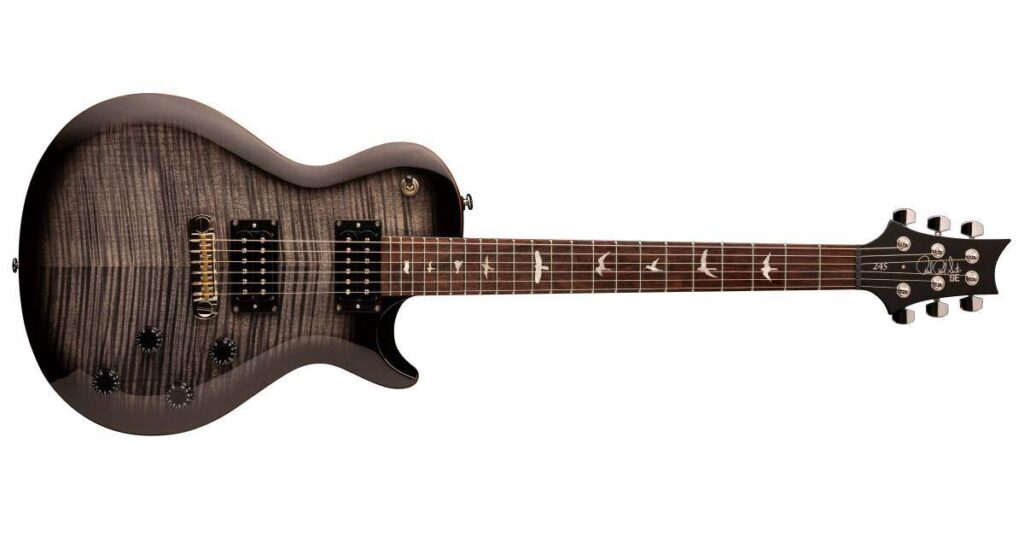
Rock stars and bedroom guitarists alike rely on thin guitar picks to strum their tunes. These flexible picks are often just 2mm thick. Why so thin? It’s all about the sound and feel. Thinner picks allow for more flexibility and a brighter tone.
Many guitarists swear by these wafer-thin plectrums. They’re perfect for fast strumming and intricate fingerpicking. Next time you’re jamming, try out a 2mm pick. You might be surprised at how it changes your playing style!
3. A Mini-tablet
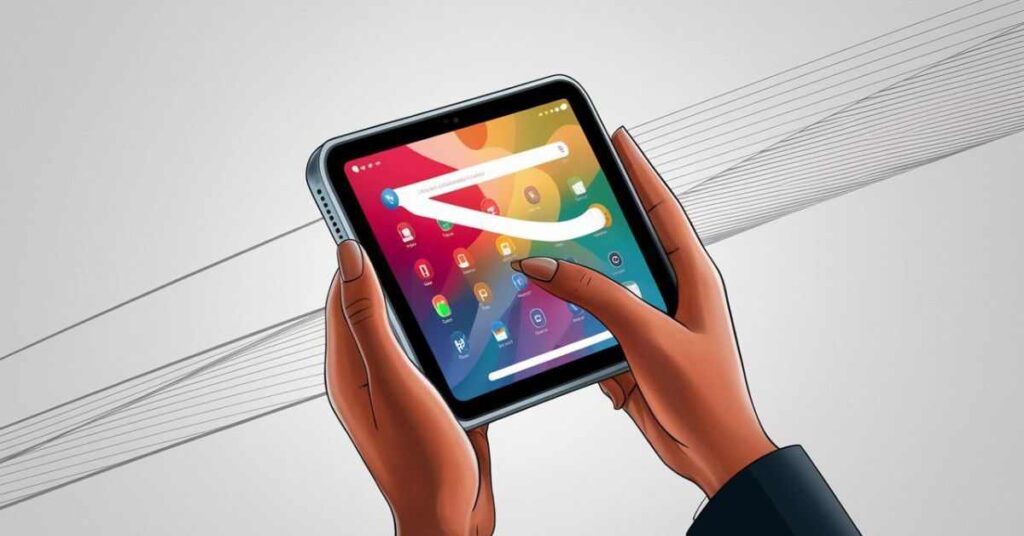
Mini-tablets are tiny pills, often just 2mm thick. These small wonders are a big deal in pediatric medication. They’re easier for kids to swallow and allow for more precise dosing.
These mini pills aren’t just for kids, though. They’re also useful for adults who have trouble swallowing larger tablets. It’s amazing how much medicine can be packed into such a tiny package!
4. A Nickel
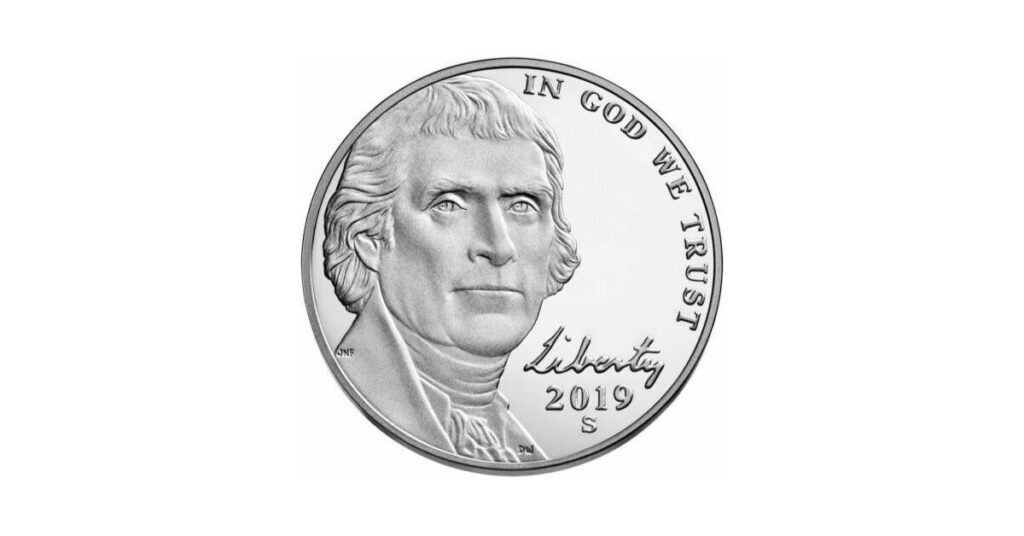
Jingle that change in your pocket. Feel that nickel? It’s about 1.95mm thick, just a hair under our 2mm mark. The U.S. nickel has been this thickness since 1866. That’s over 150 years of consistent coin thickness!
Coin thickness is crucial for vending machines and coin-operated devices. Next time you pop a nickel into a machine, remember: you’re using a piece of precisely engineered metal that’s stood the test of time.
5. Allen Key
Ever put together furniture from IKEA? Then you’ve handled an Allen key. These L-shaped tools often have a 2mm-thick shaft. They’re designed to fit perfectly into the small screws and tiny bolts, hexagonal screws, and wrenches used in flat-pack furniture.
The 2mm thickness is no accident. It’s sturdy enough to apply torque, yet small enough to fit into tight spaces. Next time you’re assembling furniture, take a moment to appreciate this humble yet essential tool!
6. 20 Sheets of paper
20 sheets of standard printer paper stacked together measure about 2mm thick. This might seem trivial, but it’s crucial in the printing industry. Knowing paper thickness helps determine how many pages a book will have or how thick a magazine will be.
Paper thickness is measured in points or mils. The average thickness is around o.05 to 0.010. One point is 1/1000 of an inch. Standard 20 lb paper is about 3.8 points thick. So, 20 sheets give us our magic 2mm number!
7. Credit Cards
Your wallet is likely full of 2mm-thick objects. Credit cards, debit cards, and other plastic cards are all designed to this specification. The bank card in your wallet is a marvel of engineering, packing a magnetic strip, chip. Sometimes even a small antenna into a 2mm thickness package.
Why 2mm? The standard card size is 85.6 mm long, and 53.98 mm. This is also 0.76 mm thick. It’s thin enough to fit many cards in a wallet, yet thick enough to be durable. The card dimensions are standardized worldwide, ensuring they work in any card reader or ATM.
8. Crayon Tip

The tip of a standard crayon is about to have 2mm thickness. This size is perfect for little hands to grip and control. It’s also ideal for creating both broad strokes and finer details.
Crayon manufacturers put a lot of thought into this seemingly simple measurement. The 2mm tip provides the right balance of durability and precision. Next time you color with a child, take a moment to appreciate this small but mighty tool!
9. Stainless Steel Wire
In the world of manufacturing, 2mm stainless steel wire is a versatile superstar. It’s used in everything from jewelry making to industrial springs. This thin yet strong wire can be bent, twisted, and shaped into countless forms.
The 2mm thickness is a sweet spot for many applications. It’s thick enough to be sturdy, yet thin enough to be flexible. Whether it’s holding together a chain-link fence or forming the skeleton of a lampshade, 2mm steel wire gets the job done.
10. Copper Wire
A 2mm thickness copper cable is commonly used in electrical work. It’s thick enough to carry a significant current, yet thin enough to be easily manipulated.
Wire gauge is crucial in electrical work. A 2mm copper wire is approximately 12 gauge, which is often used for household wiring. It’s amazing how this thin conductor can safely power our homes and appliances!
11. 2 Pennies
Two pennies stacked together give us another example of 2mm thickness. While a single penny is about 1mm thick, two of them come in at just over 2mm. This makes them a handy reference for estimating small measurements.
Pennies, like all coins, are minted to precise specifications. It is a currency that shows one-cent coin (ȼ). Abraham Lincoln was the first historical figure marked on a United States coin.
12. Keyring

Keyrings are small metal loops that are often right around 2mm thickness. They’re designed to be strong enough to hold multiple keys, yet thin enough to slide easily onto a key.
The 2mm thickness is a balance between strength and flexibility. Keyrings can hold around 8 keys at one time. It allows the ring to be opened with thumb pressure, yet stay closed securely. Next time you add a key to your ring, take a moment to appreciate this small but mighty object!
13. Toothpick
A standard wooden toothpick is about 2mm thick. This size is perfect for slipping between teeth without causing discomfort. It’s also ideal for holding small food items or testing if a cake is done.
It’s designed to be sturdy enough to do its job, yet thin enough to reach tight spaces. It can be made from wood, bamboo, or plastic bone.
14. Ruler
Most rulers you use are about to have 2mm thickness. This thickness provides a good balance between durability and ease of use. It’s thick enough to create a straight edge when drawing lines, yet thin enough to be flexible and portable.
The thickness of a ruler might seem trivial, but it’s crucial for accurate measurements. A ruler that’s too thick can create parallax errors, while one that’s too thin might bend and give inaccurate readings. The 2mm thickness is just right!
15. Dowel Pin
2mm dowel pins play a crucial role. These tiny cylinders are used to align and join pieces of material. They’re small enough to be inconspicuous, yet strong enough to hold things together.
The precision of these 2mm pins is astounding. They’re often used in applications where even a fraction of a millimeter matters. From fine furniture to precision machinery, these tiny pins keep things perfectly aligned.
16. Banana Plug
Audio enthusiasts might recognize the term banana plug. These 2mm-thick connectors are commonly used in high-fidelity audio equipment. They provide a secure, low-resistance connection for speaker wires.
The 2mm thickness of a banana plug is standardized, ensuring compatibility across different audio systems. It’s thick enough to carry the necessary current, yet thin enough to allow for easy insertion and removal. Who knew such a small connector could deliver such big sound?
17. Knitting Needle
A 2mm knitting needle is considered quite fine, often used for delicate work like lace or socks. These slender needles allow for intricate stitches and lightweight fabrics. It can be made fro Aluminum, wooden or coper sharp.
The 2mm size is also known as a US size 0 needle. It’s amazing how such a thin needle can create complex patterns and textures. Next time you admire a finely knitted piece, remember the humble 2mm needle that made it possible!
18. Paper Board
Paper board, also known as cardboard, comes in many thicknesses. A 2mm-thick board is considered relatively thin, often used for book covers, packaging, and craft projects. It’s thick enough to provide structure, yet thin enough to be easily cut and folded.
The versatility of 2mm paper board is impressive. It can be printed on, embossed, or coated for different applications. From cereal boxes to greeting cards, this thin yet sturdy material is all around us.
19. A Bead

2mm beads are considered quite small. These tiny glass beads or metal spheres are often used in delicate necklaces or intricate beadwork. Their small size allows for detailed patterns and lightweight designs.
Working with 2mm beads requires patience and precision. But the results can be stunning. Next time you admire a piece of beaded jewelry, look closely. You might spot some of these tiny 2mm wonders!
20. Tiny Screws
The world of electronics and precision instruments relies heavily on tiny screws. Many of these miniature screws have a head diameter of just 2mm. They’re small enough to secure delicate components without taking up much space.
Working with these tiny bolts requires specialized tools and steady hands. But they play a crucial role in keeping our gadgets compact and functional. Next time you look at your smartphone or watch, remember the tiny 2mm screws holding it all together!
21. A Rice Grain
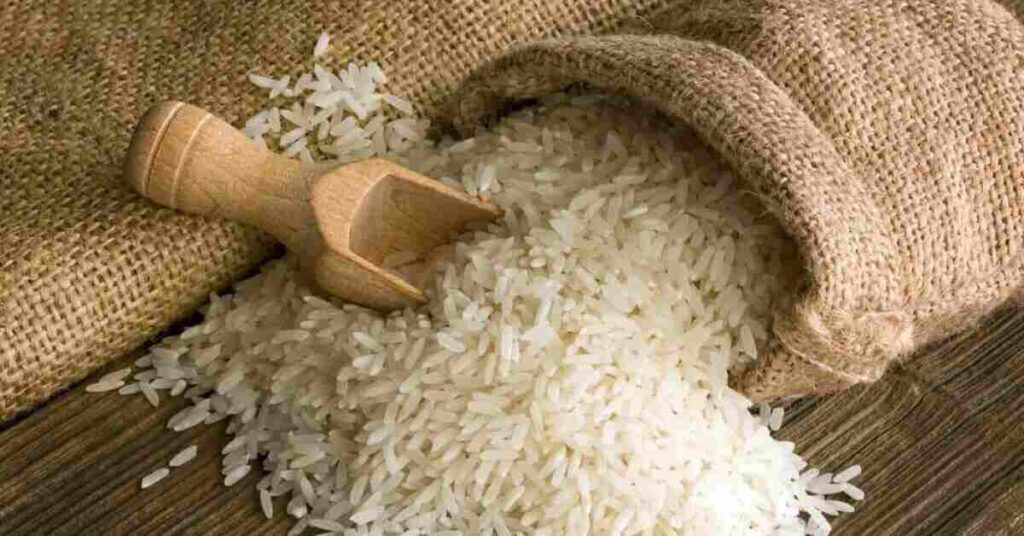
A single grain of rice provides another real-world example of 2mm thickness. While rice varieties can vary in size. Many long-grain types have 2mm thickness. This small size allows rice to cook quickly and evenly.
Rice grain size is more than just a curiosity. It affects cooking time, texture, and even the dishes it’s best suited for. Next time you’re cooking rice, take a moment to appreciate these tiny 2mm grains!
In Asian countries, Rice is a sign of wealth and fertility.
Frequently Asked Questions
How thick is 2mm?
2mm thickness is of two stacked credit cards. It’s a small but noticeable measurement.
How much is 2mm visually?
Visually, 2mm is roughly the thickness of a single grain of salt, about 6-7 grains lined up.
What is an object that is 2mm thick?
A common example is a standard credit card, which is designed to be 2mm thick.
Why is 2mm thickness commonly used?
2mm thickness is ideal for balancing strength and flexibility in many products, like phone cases and guitar picks.
How does 2mm thickness affect functionality?
It ensures durability without adding unnecessary bulk, making items more practical and user-friendly.
Final Thoughts
From the coins in your pocket to the rice on your plate, 2mm objects are all around us. These tiny items play big roles in our daily lives. Whether it’s the credit card you swipe, the guitar pick you strum, or the tiny screws holding your phone together, 2mm thickness matters more than you might think.
Next time you’re handling small objects, take a moment to consider their size. You might be surprised at how many things in your life measure up to this tiny yet significant dimension. In the world of precision and engineering, 2mm is a measurement that truly matters!
Read More:

I’m Jean Scout, and I’m thrilled to be the person behind all the measurements and dimensions you’ll find here! With a love for numbers and practical solutions, I’ve made it my mission to break down complex conversions into simple, bite-sized pieces. Whether you’re figuring out room sizes or tackling tricky conversions, I’m here to make it easy and fun. Let’s get measuring together!

